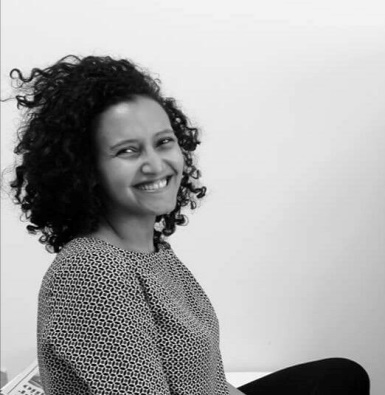NERMIN ELSHERIF

Nermin is a critical geographer, designer, and an urban researcher from Egypt. She studied architecture and urban design in the Faculty of Fine Arts in Cairo. She worked simultaneously between academia and the heritage practice since 2012. She taught at the school of architecture in both the Arab Academy for Science and Technology and the German University in Cairo for a total of five years. In the meantime, she worked with urban development and heritage management firms on UNESCO funded projects.
In 2015, and while working on the adaptive reuse plan for the southern part of the citadel she delved into the archive of maps of Cairo where she developed a passion for the cartographic representations of the cities. Her research project on the Other Maps of Egypt was awarded the DAAD-GERSS research grant in 2016 to explore techniques and technologies for mapping social history between analogue and digital media. Nermin engages with maps as complex systems of representation of power from the perspective of Science, Technology &Society (STS) studies. She has perused her passion of mapping in both academic and para-academic domains. Her MSc thesis was a critical reading of the maps of Cairo in relation to the making of the Modern State of Egypt (1798- 1912).
Her interest in following the counter narratives of the past, and exploring its invisible archives, led her to explore social media as exhibitions of online-personas, where a specific event can be co-produced through a set of digital affordances. Nermin is currently a PhD candidate in Amsterdam School for Heritage, Memory and material Culture (UvA) and an Early Stage Researcher of CHEurope project.
Her current research “Sociotechnical Imaginaries of a Modern Past” investigates how the Egyptian middle-class subjects negotiate their online identities through mobilizing “the image” of the past as a resource over Facebook. Nermin explores the contemporary Egyptian middle-class imaginaries of a “lost modernity” online. She analyses the widespread, accelerated circulation of vintage, black and white photographs of this part of Egyptian history over Facebook. How do Egyptian middle class subjects take these photographs as visual proof of a modernity that was, but is no longer, and how does memory work around them and through them? How does the medium affect the message, and how do users accommodate the medium’s specificity? What is the role of social class and its materializations (access to camera, internet, scanners, computers as well as the required knowledge to use them) in generating and anchoring imaginaries of social order? More broadly, by looking at the case of Egyptian middle-class remembrance online, this study aims to contribute to the bigger question of what does ‘remembering together’ mean in the age of social media, and the kinds of subjectivities that are produced through this memory work.
Useful links:
Digital Methods Initiative UvA
Contact: n.e.m.elsherif@uva.nl
